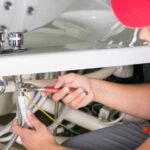Home renovation projects often focus on aesthetics. New countertops, updated flooring, and fresh paint tend to dominate the planning process. However, comfort is more than what you see. A remodel that skips over the heating and cooling system may leave you with spaces that look great but don’t feel right year-round.
Changes to layout, insulation, and square footage can impact how well your current HVAC system performs. That’s why it’s worth reviewing how your system fits into your broader renovation plans.
Let’s take a closer look at how HVAC plays a key role in home upgrades, and what you can do to avoid common mistakes.
HVAC and Home Design — How They Work Together
Every time a home is reconfigured, airflow changes. Wall removals, new windows, and room conversions can alter how air circulates. Without adjustments, this can lead to uneven cooling, hot spots, or increased energy use.
Older systems may not handle added square footage efficiently. Expanding your living area without upgrading your cooling system could push it beyond its capacity. On the flip side, sealing off rooms or changing insulation could create pressure imbalances that affect how the system performs overall.
Vent placement is another factor. When furniture or walls block return vents or registers, circulation suffers. Contractors may overlook these details unless HVAC is part of the conversation early on.
This is why it’s important to evaluate your current setup alongside design decisions. A system that worked for the original layout may need updates to handle the changes you’re making.
Renovation Scenarios That Should Trigger a System Check
Homeowners often assume that HVAC systems will adjust automatically to changes. In reality, many remodels introduce features that disrupt balance. Large kitchen upgrades with new appliances, for example, can generate more heat and stress a cooling system that’s already aging.
Room additions increase the load on air conditioning systems. Even small changes — like converting an attic or garage into livable space — can impact how evenly the system cools the home. Adding square footage without modifying ductwork may leave the new area uncomfortable or force the system to overwork.
Some renovations reroute ductwork or change vent locations. Without recalibrating airflow, this can cause inconsistent temperatures and poor air distribution. Energy efficiency also suffers if the system is oversized or undersized for the revised layout.
Before making major changes, scheduling professional AC repair in Orlando can help ensure your current setup supports the updated layout without compromising performance. A technician can inspect your system, identify potential weak spots, and suggest solutions that support your renovation goals.
Avoiding Problems Through Early Coordination
HVAC professionals should be involved at the planning stage. Leaving heating and cooling considerations until the final phase often results in rushed solutions or missed opportunities to improve comfort.
Share your renovation plans with a technician as early as possible. Provide information on square footage changes, insulation upgrades, window replacements, and layout adjustments. This allows for a more accurate system evaluation.
Renovations often expose walls and ceilings, making it easier to inspect or update ductwork. If there are accessibility issues or airflow limitations, addressing them while construction is underway is more efficient and less disruptive.
Delays in HVAC planning can create schedule issues. If inspections or equipment upgrades are needed late in the process, it could push back other parts of the remodel. By coordinating early, you reduce the chance of complications later.
Smart Upgrades to Consider Mid-Renovation
Renovation time is ideal for rethinking comfort. When the home is already under construction, it’s easier to make changes that would otherwise require tearing into finished surfaces.
Smart thermostats are a practical addition. They offer more control over temperatures and can help reduce energy bills. Some systems even learn your schedule and adjust settings automatically, improving efficiency without constant input.
Zoning systems are another worthwhile upgrade. These divide the home into sections that can be cooled or heated independently. If you’re adding a new wing or finishing a basement, this can improve comfort and reduce waste.
Replacing an older air conditioning unit may also be worth considering. New models are quieter, more efficient, and often eligible for rebates or incentives. When a system is 10 years or older, even small improvements in efficiency can lead to noticeable savings over time.
Orlando’s climate demands reliable cooling, especially during long summers. Renovating gives you the chance to invest in upgrades that make your home more comfortable and efficient for the years ahead.
Make HVAC Part of Your Home Upgrade Strategy
A beautiful home still needs to feel comfortable year-round. Renovation projects offer a rare opportunity to enhance both form and function simultaneously.
Skipping over HVAC planning can result in rooms that don’t stay cool, systems that struggle, and energy bills that creep up. On the other hand, a well-integrated cooling system supports your upgrade in ways you’ll appreciate long after the dust has settled.
Talk to professionals early. Review your layout changes. Consider how airflow, ductwork, and system size all tie into your remodel. Including HVAC in the process from the start leads to better outcomes and a smoother project overall.
If you’re renovating in a warm climate like Florida, don’t forget how much your comfort depends on the right cooling setup. Include it in your plans, and you’ll end up with a home that works as well as it looks.















